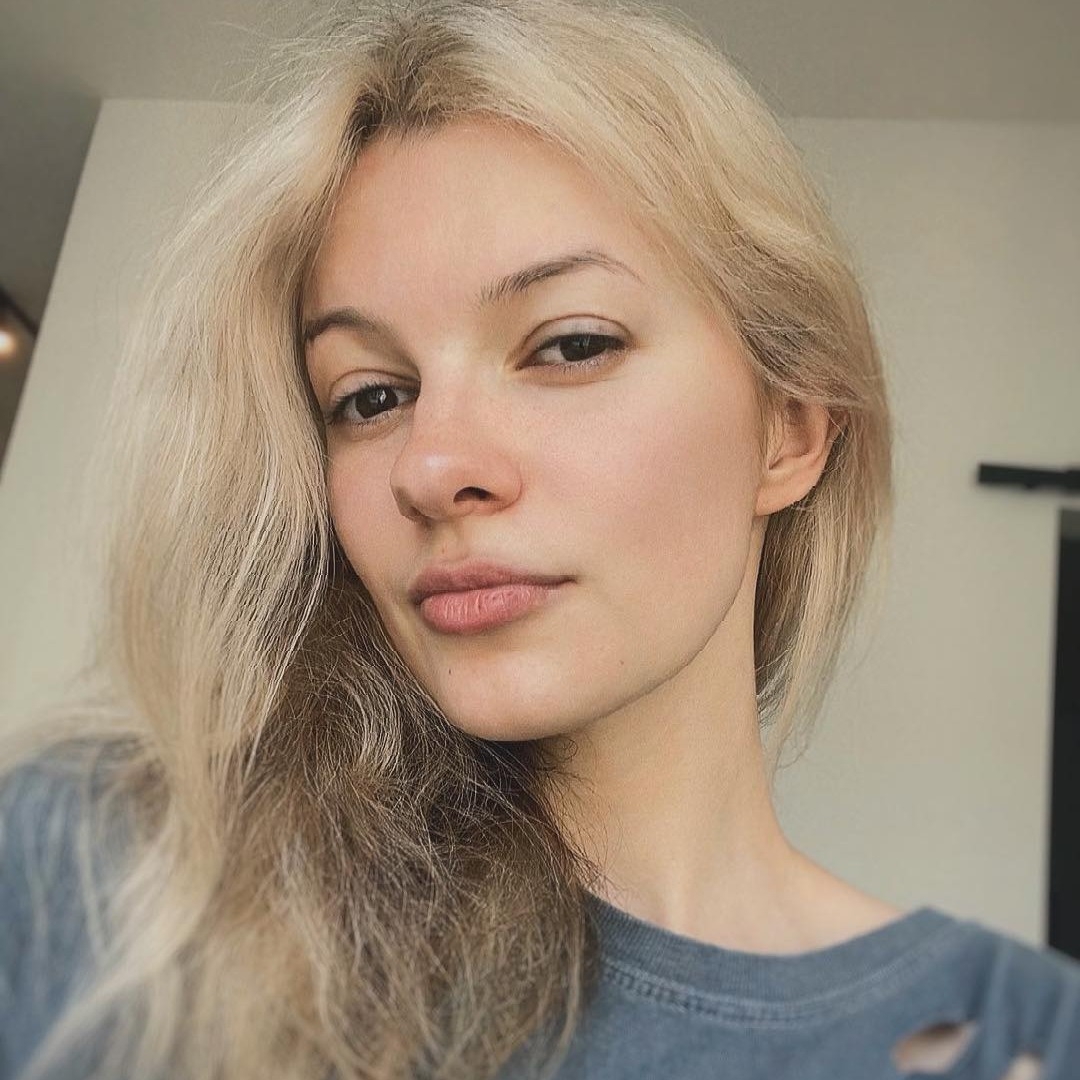DeCarlos Brown Jr. has been charged in the fatal stabbing of 23-year-old Ukrainian woman #IrynaZarutska, NBC News reports, citing the U.S. Department of Justice.
The man is accused of fatally stabbing a Ukrainian refugee on a North Carolina train on Aug. 22.
Zarutska, according to her family, had recently arrived in the United States, fleeing a war started by Russia. She began working immediately after receiving her work permit: helping out at a senior center, working part-time at a pizzeria and taking care of animals in her neighborhood, said James Barnacle, deputy director of the FBI's Criminal Division.
In a statement, family attorney Lauren Newton said Zarutska was "kind and hardworking" and loved by her family and friends.
“Iryna came here to find peace and safety, but instead her life was horribly cut short,” a family spokesman said.
Barnacle added that she had recently moved in with her partner. The statement also said that Iryna had been attending a local college, improving her English.
“Iryna Zarutska was a young woman living the American dream. Her brutal murder is a direct result of a failed, soft-on-crime policy that puts criminals above innocent people,” said Attorney General Pam Bondi.
According to the case file, Brown has a long criminal history. He has felony convictions for burglary and armed robbery, for which he served five years.
Zarutska boarded the LYNX Blue Line at 9:46 p.m., and was seated in front of Brown.
“At approximately 9:50 p.m., Brown pulled a knife from his pocket, unfolded it, and stabbed the victim three times in the back. He left her bleeding after the attack,” the case file states.
Relatives became concerned when Irina, who had texted her partner that she was on her way home, failed to show up on time.
“The phone’s location showed she was still at the station. When relatives arrived, they were shocked to learn that Irina had died at the scene,” the statement says.
Police, who arrived at 1800 Camden Road, found Irina dead in the back of the train. Investigators found a pocket knife and the alleged killer’s blood-soaked red shirt at the scene. Brown was arrested on the LYNX Blue Line platform. He was initially charged with first-degree murder.
Brown is in state custody and could face additional federal charges.
The Justice Department added that if convicted, he faces life in prison without parole or the death penalty.
Zarutska's family, in a statement issued through their attorney, said they want justice but also want to draw public attention to the issue of public transportation safety, expressing outrage at the lack of security during the attack and demanding an investigation into protocol flaws that may have contributed to the tragedy.
"Any of the passengers that night could have been in her shoes. We are determined to ensure that this never happens again," they said.
Ferguson and Barnacle also said they had spoken with the family, who had expressed a desire to bury Iryna in the United States.
https://www.facebook.com/iryna.zarutska
The man is accused of fatally stabbing a Ukrainian refugee on a North Carolina train on Aug. 22.
Zarutska, according to her family, had recently arrived in the United States, fleeing a war started by Russia. She began working immediately after receiving her work permit: helping out at a senior center, working part-time at a pizzeria and taking care of animals in her neighborhood, said James Barnacle, deputy director of the FBI's Criminal Division.
In a statement, family attorney Lauren Newton said Zarutska was "kind and hardworking" and loved by her family and friends.
“Iryna came here to find peace and safety, but instead her life was horribly cut short,” a family spokesman said.
Barnacle added that she had recently moved in with her partner. The statement also said that Iryna had been attending a local college, improving her English.
“Iryna Zarutska was a young woman living the American dream. Her brutal murder is a direct result of a failed, soft-on-crime policy that puts criminals above innocent people,” said Attorney General Pam Bondi.
According to the case file, Brown has a long criminal history. He has felony convictions for burglary and armed robbery, for which he served five years.
Zarutska boarded the LYNX Blue Line at 9:46 p.m., and was seated in front of Brown.
“At approximately 9:50 p.m., Brown pulled a knife from his pocket, unfolded it, and stabbed the victim three times in the back. He left her bleeding after the attack,” the case file states.
Relatives became concerned when Irina, who had texted her partner that she was on her way home, failed to show up on time.
“The phone’s location showed she was still at the station. When relatives arrived, they were shocked to learn that Irina had died at the scene,” the statement says.
Police, who arrived at 1800 Camden Road, found Irina dead in the back of the train. Investigators found a pocket knife and the alleged killer’s blood-soaked red shirt at the scene. Brown was arrested on the LYNX Blue Line platform. He was initially charged with first-degree murder.
Brown is in state custody and could face additional federal charges.
The Justice Department added that if convicted, he faces life in prison without parole or the death penalty.
Zarutska's family, in a statement issued through their attorney, said they want justice but also want to draw public attention to the issue of public transportation safety, expressing outrage at the lack of security during the attack and demanding an investigation into protocol flaws that may have contributed to the tragedy.
"Any of the passengers that night could have been in her shoes. We are determined to ensure that this never happens again," they said.
Ferguson and Barnacle also said they had spoken with the family, who had expressed a desire to bury Iryna in the United States.
https://www.facebook.com/iryna.zarutska
DeCarlos Brown Jr. has been charged in the fatal stabbing of 23-year-old Ukrainian woman #IrynaZarutska, NBC News reports, citing the U.S. Department of Justice.
The man is accused of fatally stabbing a Ukrainian refugee on a North Carolina train on Aug. 22.
Zarutska, according to her family, had recently arrived in the United States, fleeing a war started by Russia. She began working immediately after receiving her work permit: helping out at a senior center, working part-time at a pizzeria and taking care of animals in her neighborhood, said James Barnacle, deputy director of the FBI's Criminal Division.
In a statement, family attorney Lauren Newton said Zarutska was "kind and hardworking" and loved by her family and friends.
“Iryna came here to find peace and safety, but instead her life was horribly cut short,” a family spokesman said.
Barnacle added that she had recently moved in with her partner. The statement also said that Iryna had been attending a local college, improving her English.
“Iryna Zarutska was a young woman living the American dream. Her brutal murder is a direct result of a failed, soft-on-crime policy that puts criminals above innocent people,” said Attorney General Pam Bondi.
According to the case file, Brown has a long criminal history. He has felony convictions for burglary and armed robbery, for which he served five years.
Zarutska boarded the LYNX Blue Line at 9:46 p.m., and was seated in front of Brown.
“At approximately 9:50 p.m., Brown pulled a knife from his pocket, unfolded it, and stabbed the victim three times in the back. He left her bleeding after the attack,” the case file states.
Relatives became concerned when Irina, who had texted her partner that she was on her way home, failed to show up on time.
“The phone’s location showed she was still at the station. When relatives arrived, they were shocked to learn that Irina had died at the scene,” the statement says.
Police, who arrived at 1800 Camden Road, found Irina dead in the back of the train. Investigators found a pocket knife and the alleged killer’s blood-soaked red shirt at the scene. Brown was arrested on the LYNX Blue Line platform. He was initially charged with first-degree murder.
Brown is in state custody and could face additional federal charges.
The Justice Department added that if convicted, he faces life in prison without parole or the death penalty.
Zarutska's family, in a statement issued through their attorney, said they want justice but also want to draw public attention to the issue of public transportation safety, expressing outrage at the lack of security during the attack and demanding an investigation into protocol flaws that may have contributed to the tragedy.
"Any of the passengers that night could have been in her shoes. We are determined to ensure that this never happens again," they said.
Ferguson and Barnacle also said they had spoken with the family, who had expressed a desire to bury Iryna in the United States.
https://www.facebook.com/iryna.zarutska
0 Yorumlar
0 hisse senetleri
2K Views
0 önizleme












